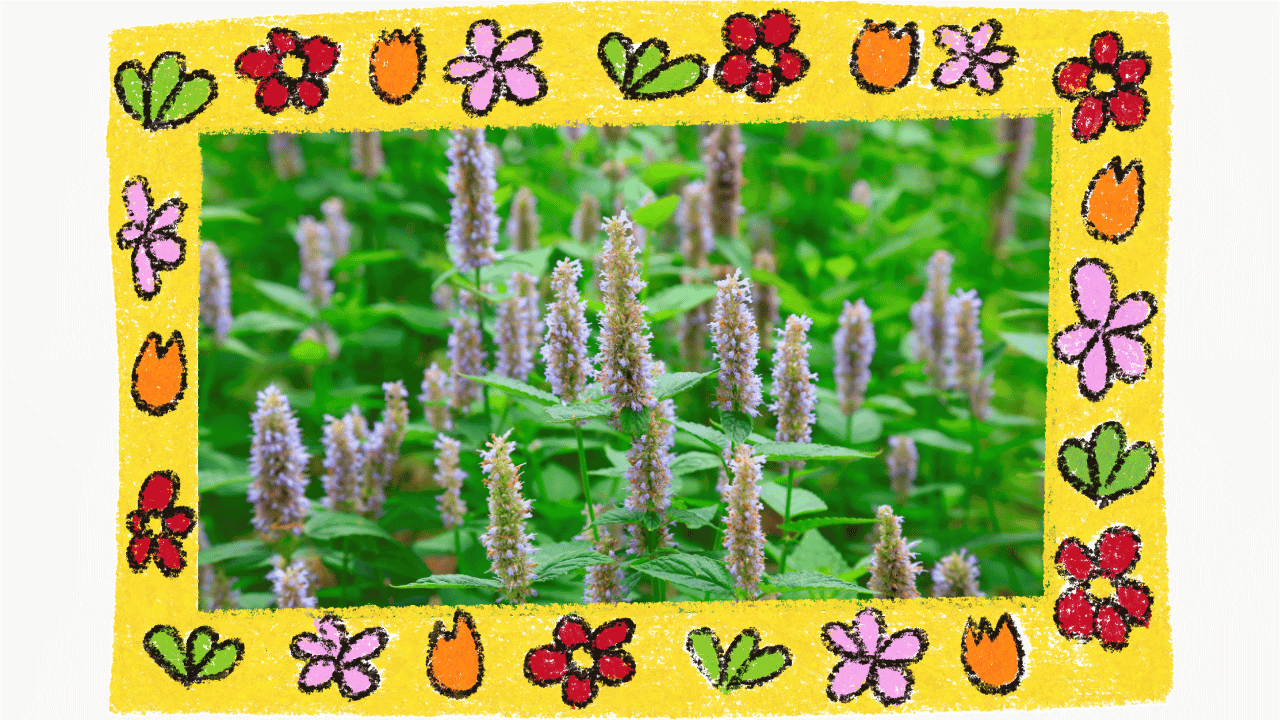Herbs | Last Modified:
Exploring the Benefits and Uses of Korean Mint (Agastache rugosa)

What is Korean Mint?
Korean mint, scientifically known as Agastache rugosa, is a member of the Lamiaceae family and is primarily valued for its aerial parts, particularly the leaves and flowers. This aromatic herb contains a volatile oil rich in constituents such as methylchavicol, anethole, anisaldehyde, and limonene, contributing to its distinctive flavor and potential health benefits. It is characterized by an acrid and slightly warm energy, making it a popular choice in herbal remedies.
Historically, Korean mint was first documented in the ancient Chinese medicinal text, Shen’nong Bencaojing, attributed to Tao Hongjing around 500 CE, highlighting its longstanding significance in traditional medicine. Known as Huo Xiang in Chinese, this herb is believed to enter the Lung, Spleen, and Stomach channels, further enhancing its appeal in holistic practices.
Where Korean Mint (Agastache rugosa) Grows and How It’s Cultivated
Korean mint (Agastache rugosa) is an aromatic perennial or biennial herb that can reach heights of up to 4 feet (1.2 m). Characterized by its square stem, triangular leaves, and striking purple flowers that bloom in dense spikes, this herb thrives in diverse environments. Native to China, it is also found in Japan, Korea, Laos, and Russia, where it typically grows wild on slopes and roadsides. Cultivation of Korean mint is widespread across China, where it is harvested during the summer months. Its adaptability and appealing aroma make it a favored choice among herbalists and gardeners alike.
Benefits and Uses of Korean Mint (Agastache rugosa)
Medicinal Actions and Uses
Korean mint is recognized in Oriental herbal medicine for its acrid and warming properties, making it effective for addressing “dampness” within the digestive system. This herb is particularly beneficial in treating symptoms such as abdominal bloating, nausea, and vomiting. In Korea, the leaves are often consumed as a condiment to aid digestion, as they stimulate and warm the digestive tract. Korean mint is especially noted for its role in alleviating morning sickness and managing early stages of viral infections that present with stomachache and nausea.
Treating Fungal Infections
Research indicates that Korean mint possesses significant antifungal properties, making it a useful treatment for conditions like ringworm. A lotion containing Korean mint can be applied topically to combat fungal infections, demonstrating its versatile applications in both internal and external health concerns.
Specific Indications
-
Dampness Obstruction: Korean mint is effective for dampness obstructing the Spleen and Stomach, alleviating symptoms such as distended abdomen, nausea, and vomiting. It can also address a white, moist tongue coating.
-
Nausea and Vomiting: This herb is commonly used to relieve nausea and vomiting associated with dampness in the Middle Burner. It is also beneficial for morning sickness.
-
Externally Contracted Wind-Cold: Korean mint helps treat symptoms of externally contracted wind-cold, especially when accompanied by digestive issues like stomachache and distention.
Pharmacological and Clinical Research
Laboratory studies have shown that Korean mint exhibits antibiotic effects, particularly against various pathogenic fungi. Preparations containing Korean mint have demonstrated significant inhibitory activity in vitro, showcasing its potential as a natural remedy in treating fungal infections and supporting overall digestive health.
Korean Mint Preparations and Dosage Guidelines
Preparations
Korean mint (Agastache rugosa) can be used in various forms for optimal benefits. When the fresh herb is available, a dosage of 15–30 grams is recommended. To preserve its aromatic volatile oils, it should be cooked for only a few minutes in a pot with a tight-fitting lid. Alternatively, the herb can be steeped in hot water to make a soothing tea.
For specific uses:
-
Leaves (Huo Xiang): Best for releasing exterior dampness and addressing digestive issues.
-
Stalks (Huo Xiang Geng): Primarily used to harmonize the Middle Burner.
Dosage Guidelines
The standard dosage for dried Korean mint is 4.5–9 grams. It’s essential not to cook it for more than 15 minutes to retain its beneficial properties. Look for high-quality herbs that have a rich aroma, blue-green stems, and many leaves. The variety Herba Pogostemi is generally considered superior.
Cautions and Contraindications
Korean mint should not be used in cases of Yin deficiency with heat signs or Stomach fire. Additionally, it is not suitable for conditions lacking dampness. Always consult a healthcare professional before starting any new herbal regimen, especially if you have underlying health conditions.
Closing Remarks
Thank you for exploring the benefits and uses of Korean mint (Agastache rugosa) with us! We’ve examined its diverse applications, from aiding digestion and alleviating nausea to its potential antifungal properties. We hope this guide offers valuable insights into how this aromatic herb can support your health and well-being. Stay tuned for more articles on traditional herbs and holistic wellness practices!
